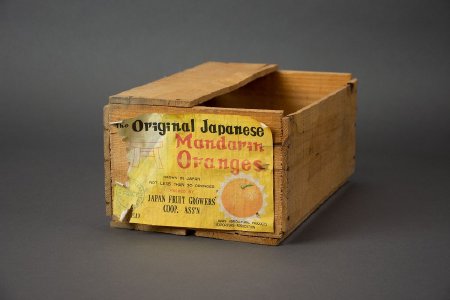Description:
An Ap-peel-ing Christmas Treat
Every year when the holidays roll around, Ketchikan's social media pages light up with nostalgic stories of ice skating at Ward Lake, sledding after a big snow storm, and recalling holiday traditions. Many Ketchikan kids (past and present!) have vivid memories of waking up Christmas morning to find a mandarin orange in the toe of a stocking. The small citrus fruit with its aromatic scent and sweet flavor is often called the Christmas orange because its appearance in the fall signals the start of the holiday season. The fruit is also symbolic of family, tradition, and abundance throughout Asia, the United States, Canada, and Russia.
Our neighbors in British Columbia first imported Japanese mandarins in the late 1800s to provide Japanese workers with a taste of their original home. It is unknown when the first mandarins came to Ketchikan, but it is possible they were available to the Japanese and Chinese cannery workers in Loring and the surrounding areas. During World War II the ties between Japanese exporters and the United States were severed and mandarin oranges went missing from Christmas for a few seasons. In late 1948, the Japan Fruit Growers Cooperative Association joined 20 agricultural producers together and helped reintroduce mandarins and other fruit from Japan back to the United States and Canada.
The season for mandarins is usually after the first frost which yields a sweeter fruit. In the past that meant harvesting in mid to late November into the spring. Modern food production allows the fruit to be available in stores pretty much all year round now. To keep them fresh, each delicate orange came wrapped in colored tissue paper in wooden crates. After the oranges were eaten, the wooden crates were converted to a myriad of other useful items from storage containers, step stools, tool boxes, and even doll houses. Eventually the wooden boxes were replaced by more cost-effective cardboard containers and mesh sacks.
Ketchikan Museums, KM 2020.2.92.1

